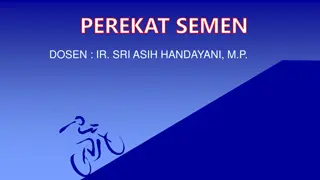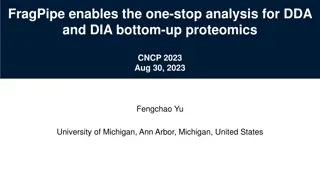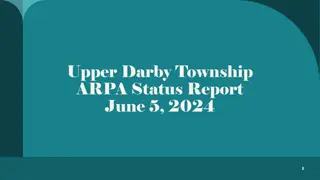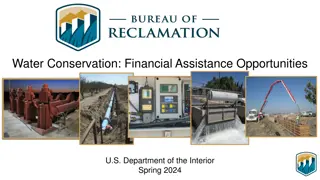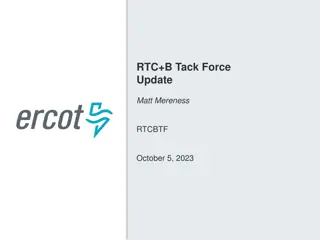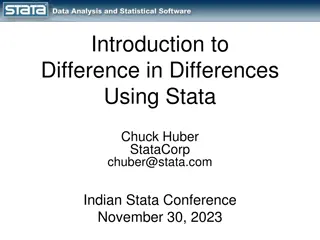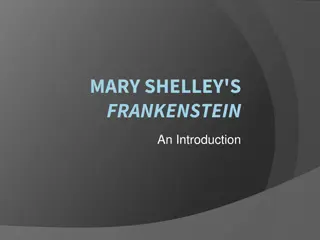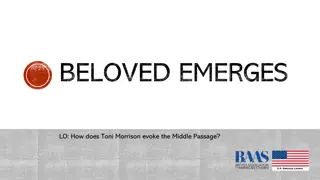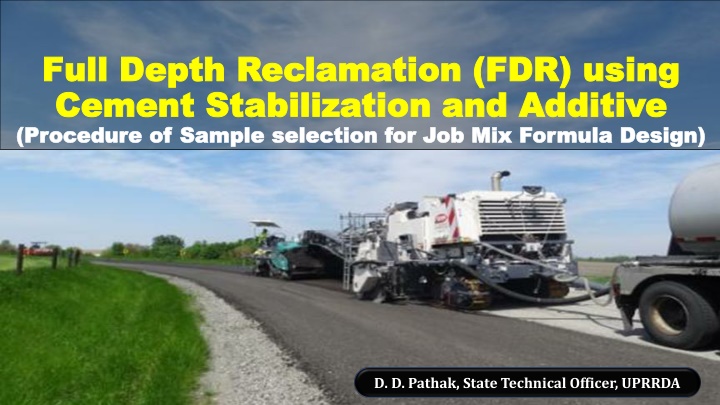
Full Depth Reclamation (FDR) using Cement Stabilization and Additive
The procedure of selecting representative samples for the Job Mix Formula Design in Full Depth Reclamation (FDR) using Cement Stabilization and Additive. Understand the important principles and steps involved in sample collection.
Download Presentation
Please find below an Image/Link to download the presentation.
The content on the website is provided AS IS for your information and personal use only. It may not be sold, licensed, or shared on other websites without obtaining consent from the author. Download presentation by click this link. If you encounter any issues during the download, it is possible that the publisher has removed the file from their server.
Presentation Transcript
Full Depth Reclamation (FDR) using Full Depth Reclamation (FDR) using Cement Stabilization and Additive Cement Stabilization and Additive (Procedure of Sample selection for Job Mix Formula Design) (Procedure of Sample selection for Job Mix Formula Design) D. D. Pathak, State Technical Officer, UPRRDA
The Job Mix Design (JMF) should account for the quality and type of existing pavement materials, which is proposed to be reclaimed to construct FDR Base. As success of the FDR depends on the judicious collection of the sample for JMF, the samples of material should be taken carefully to match the ratio of the material, which is likely to be used in reclamation.
General principles of sample selection General principles of sample selection
If the existing thickness the road crust is same throughout the length of the road and the nature of subgrade soil is not changing, then one JMF will be sufficient for one road. If the existing thickness the road crust is changing and/or the nature of subgrade soil is changing, the multiple number of JMF will be required to be designed. If the FDR group consists of two or more roads, the JMF for each road will be required to be designed.
Generally, size of the pit should be kept 50 cm x 50 cm. Minimum one sample will be required to be taken in each Km. The location of sample pit should be kept staggered throughout the length. For example, if in any Km sample is taken near the left edge of the pavement then in next Km it is to be taken from the center of the pavement and again in next Km it is to be taken near the right edge of the pavement.
In the process of pulverization aggregate of the existing pavement is mixed with subgrade soil along with cement, Stabilizer (Additive) and water, it is to be ensured that around 40-45% of soil also get mixed in the process. It may be needed to add some quantity of extra soil from outside then the same quantity of soil should be added to the sample material. Commercial Chemical
Steps to be followed in Representative Sample Collection
Case- I When the existing pavement width is 3.00 m and proposed carriage way width of FDR is 5.50 m The width of FDR base will be 5.50 + 0.15= 5.65 m
Procedure of sampling Procedure of sampling If width of existing pavement is 3m or 3.75 m and it is proposed to construct FDR width in 5.65m then during execution of FDR the existing pavement will be required to be dismantled and the same material is to be spread out in 5.65 m, therefore first record the existing thickness of available crust along the length of the road and then calculate the average thickness of aggregate that will be available after spreading it in the 5.65m width. For example: Suppose that- 1- Thickness of existing pavement = 0.200 m 2- Width of existing pavement = 3.000 m 3- Proposed width of pavement = 5.50 m
4- Then Proposed width of FDR Base = 5.65 m (After providing offset of 7.5 cm in each side) 5- Proposed thickness of FDR Base = 0.25 m If existing pavement is dismantled and spread in 5.65 m then compacted thickness will come out as: Actual thickness of aggregate that will be available for reclamation = (3.00 x 0.20)/5.65 = 0.11 m
Therefore in sample for job mix design aggregate of thickness 110 mm and subgrade soil of thickness (250 mm-110 mm= 140 mm) 140 mm will be required to be taken. First mark the 50 cm x 50 cm pit size on the surface of the pavement. Dig out all the aggregate, stack it outside and properly mixed to get uniform grading and nature. This material will represent the thickness of 20 cm aggregate.
This material will represent the thickness of 20 cm aggregate and we have to take the aggregate of 11 cm thickness only for sample therefore divide this sample in 11:9 ratio by weight or by volume. Take the 11 part for sample and discard the 9 part. As proposed thickness of FDR is 25 cm, collect the 25 11 = 14 cm thickness of soil from underneath subgrade for the sample. Then mix the aggregate and soil which has been taken thoroughly to have uniform mixture.
Sample should be sealed jointly by PIU/PMU and contractor representative with signature before sending to the labs and letter with Geotagged photos issued by EE to testing Institution for JMF. Sampling must be done either in presence of AE/EE & PMU representative along with the representative of the contractor and photography shall be done. should be
Case- II When the existing pavement width is 3.00 m and proposed carriage way width of FDR is 3.75 m The width of FDR base will be 3.75 + 0.15= 3.90 m
Procedure of sampling Procedure of sampling If width of existing pavement is 3m or 3.75 m and it is proposed to construct FDR width in 3.90 m then during execution of FDR the existing pavement will not be required to be dismantled, therefore first record the existing thickness of the crust and calculate the thickness of aggregate that will remain available in 3.90 m width. For example: Suppose that- 1- Thickness of existing pavement = 0.200 m 2- Width of existing pavement = 3.00 m 3- Proposed width of pavement = 3.90 m
4- Then Proposed width of FDR Base = 3.90 m (After providing offset of 7.5 cm in each side) 5- Proposed thickness of FDR Base = 0.25 m Material of the existing pavement is to be used in 3.90 m then thickness of the aggregate will come out as: Thickness of aggregate that will be available for reclamation = (3.00 x 0.20)/3.90 = 0.15 m
Therefore in sample for job mix design aggregate of thickness 150 mm and subgrade soil of thickness (250 mm-150 mm= 100 mm) 100 mm will be required to be taken. First mark the 50 cm x 50 cm pit size on the surface of the pavement. Dig out all the aggregate, stack it outside and properly mixed to get uniform grading and nature.
This material will represent the thickness of 20 cm aggregate and we have to take the aggregate of 15 cm thickness only for sample therefore divide this sample in 15:5 ratio by weight or by volume. Take the 15 part for sample and discard the 5 part. As proposed thickness of FDR is 25 cm, collect the 25 15 = 10 cm thickness of soil from underneath subgrade for the sample. Then mix the aggregate and soil which has been taken thoroughly to have uniform mixture.
Sample should be sealed jointly by PIU/PMU and contractor representative with signature before sending to the labs and letter with Geotagged photos issued by EE to testing Institution for JMF. Sampling must be done either in presence of AE/EE & PMU representative along with the representative of the contractor and photography shall be done. If existing road is 3.75 m and no widening is proposed, then also minimum 10 cm soil of good quality soil should be added and only 15 cm thickness of representative aggregate material should be taken from job mix sample. should be
THANK YOU THANK YOU

